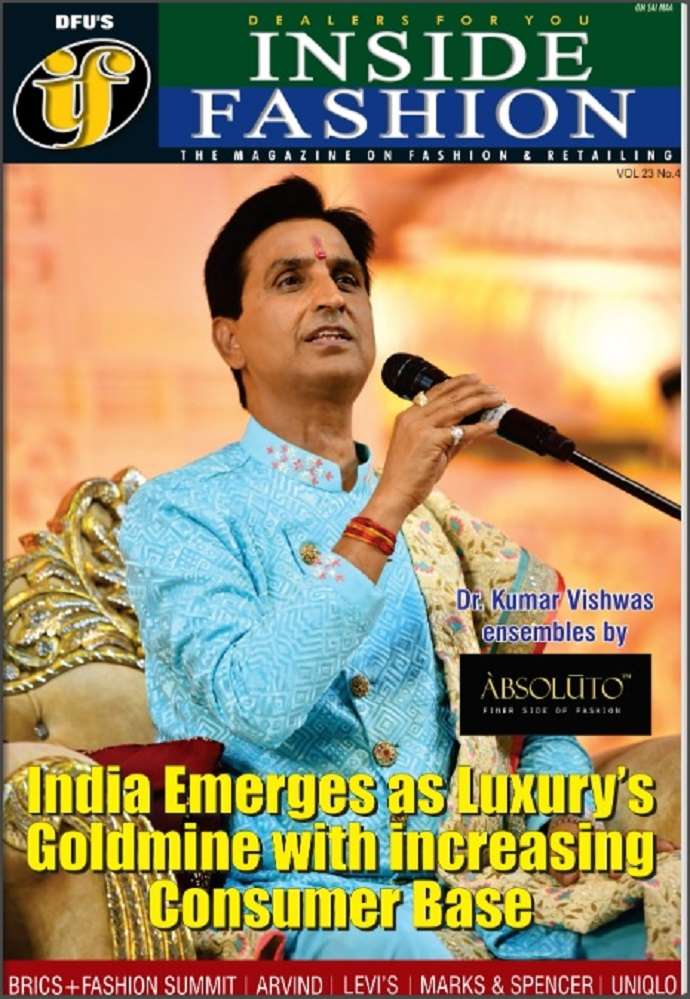From Click to Closet: How AI is transforming the Indian shopper’s journey

25 August 2025, Mumbai
The fashion industry once dominated by seasonal trends and one-size-fits-all marketing, is now rapidly evolving into a data-driven, customer-first ecosystem powered by artificial intelligence (AI). From hyper-personalized recommendations to seamless omnichannel shopping journeys, technology is quietly rewriting the rules of how consumers discover, try, and buy fashion.
Globally, the AI in fashion market was valued at $0.65 billion in 2022, and its growth reflects exponential promise. In India, the transformation is even more striking. Valued at $216.26 million in 2023, the domestic AI-driven fashion retail market is projected to increase nearly 14 times, to $2.97 billion by 2032. For a country where fashion is not just commerce but cultural expression, this could redefine consumer-brand relationships for the decade to come.
The rise of hyper-personalization in fashion
Today’s shopper isn’t simply buying clothes, they’re buying an experience that feels uniquely theirs. This has given rise to AI-powered hyper-personalization, where every touchpoint is informed by data, behavior, and predictive insights.
Virtual try-on & fitting rooms: AR-enabled try-on tools are allowing shoppers to “wear” outfits virtually before committing. By mapping facial features or body dimensions through a smartphone camera, these solutions reduce guesswork and, crucially, cut down the high return rates that plague online fashion retailers.
Generative AI for design & forecasting: Designers are increasingly working alongside algorithms. By scanning millions of data points across social media, fashion blogs, and historical purchase records, AI predicts upcoming trends and even suggests new patterns, color palettes, and silhouettes. This not only helps brands stay relevant but also reduces overproduction, a key sustainability concern.
Personalized style recommendations: From AI-powered chatbots to digital stylists, consumers now have access to shoppable, curated looks tailored to their browsing history or uploaded wardrobe photos. Such innovations transform product discovery from a frustrating search into an engaging, intuitive journey.
The omnichannel imperative
Fashion consumers no longer distinguish between online and offline, they expect both worlds to merge seamlessly. This demand for consistency across platforms has made omnichannel retail the industry’s holy grail.
For example, Reliance Retail with over 18,650 stores and brands ranging from AJIO to Azorte, has built an integrated fashion ecosystem. Its AI-backed common inventory system enables hyper-local deliveries, while predictive analytics optimize both supply chains and customer experience. Similarly, Myntra’s MyFashionGPT and My Stylist tools are redefining product discovery. Consumers can now shop by simply typing natural language queries (“show me festive kurtas under Rs 3000”) or receive outfit recommendations driven by generative AI. The result: higher engagement and stronger conversions.
The final step in fashion’s omnichannel loop is payment experience. Fintech disruptors like Razorpay are erasing the gap between online and offline by linking a customer’s identity across platforms. This consistency not only reduces friction at checkout but also unlocks personalized payment solutions.
Growth projections
The integration of AI and omnichannel strategies is not merely experimental it is a growth engine. Retailers leveraging personalization have been found to outperform revenue goals by 40 per cent compared to competitors.
Table: Projected growth of AI in Indian retail market
|
Year |
Market Size (in $ mn) |
|
2023 |
216.26 |
|
2024 |
300.55 |
|
2025 |
420.7 |
|
2026 |
590.1 |
|
2027 |
829.4 |
|
2028 |
1,165.70 |
|
2029 |
1,637.50 |
|
2030 |
2,298.80 |
|
2031 |
2,624.50 |
|
2032 |
2,970.00 |
Source: Credence Research
With India’s growing retail market, the opportunities are vast. Brands that adapt AI seamlessly into their omnichannel strategy are well-positioned to capture a disproportionate share of this growth. Therefore AI’s promise for fashion is not only commercial but also cultural and sustainable.
Table: Global vs Indian AI in fashion market growth (2022–2032)
|
Year |
Global market size ($mn) |
India market size ($mn) |
|
2022 |
0.65 |
— |
|
2023 |
0.9 |
216.26 |
|
2025 |
1.45 |
420.7 |
|
2027 |
2.3 |
829.4 |
|
2029 |
3.7 |
1,637.50 |
|
2030 |
4.8 |
2,298.80 |
|
2032 |
6.6 |
2,970.00 |
Sources: Market Research Future, Credence Research
By minimizing overproduction, reducing returns, and enhancing personalization, it aligns profitability with responsibility. For consumers, the future of fashion will be defined less by mass trends and more by intelligent, individualized experiences. As one retail executive put it, “The winners of tomorrow won’t be the brands with the biggest catalogues, but the ones that know their customers best—and serve them seamlessly across every channel.”
























